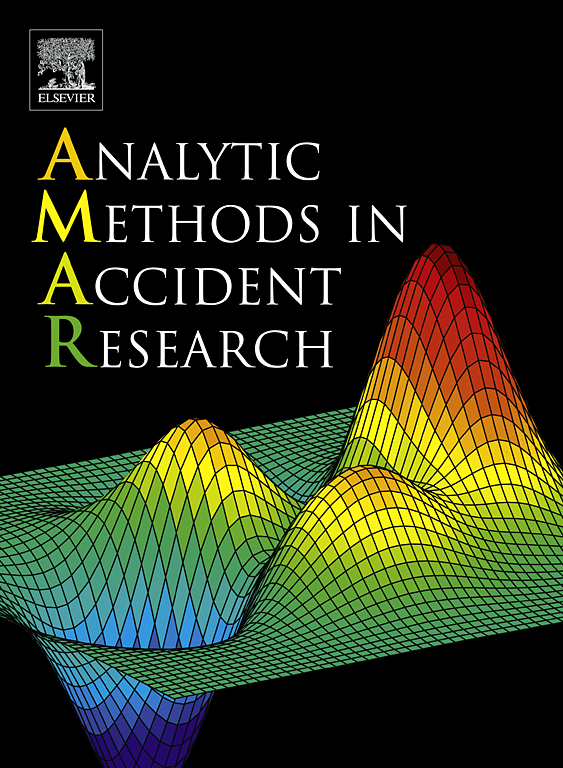A non-stationary bivariate extreme value model to estimate real-time pedestrian crash risk by severity at signalized intersections using artificial intelligence-based video analytics
Abstract
Vehicle-pedestrian crashes are generally severe due to the vulnerability of pedestrians compared to the occupants of vehicles. However, the estimation of pedestrian crash risk by severity has not been given adequate attention in the field of proactive safety assessments applying traffic conflict techniques. This study proposes a novel analytical framework to estimate real-time pedestrian crash risk by severity at the signal cycle level while incorporating the effect of time-varying exogenous variables. Specifically, the study applies a non-stationary bivariate extreme value model to jointly model the post encroachment time and Delta-V for estimating real-time pedestrian crash risk by severity at individual signal cycles. The proposed framework is tested on 144 h of video data collected from three signalized intersections in Queensland, Australia. The developed bivariate extreme value model has been found to reliably predict severe and non-severe pedestrian crash frequencies compared to the historical crash records of severe and non-severe pedestrian crashes at those signalized intersections. Results suggest that the frequency of pedestrian conflicts per signal cycle and average pedestrian speed in a signal cycle are associated with real-time pedestrian crash risks. In addition, pedestrian conflicts per signal cycle and average vehicle speed per cycle were associated with the interaction severity component of the non-stationary bivariate extreme value model. The proposed proactive estimation of pedestrian crash risk by severity levels can help design time-sensitive countermeasures for vulnerable road users.

 求助内容:
求助内容: 应助结果提醒方式:
应助结果提醒方式:


